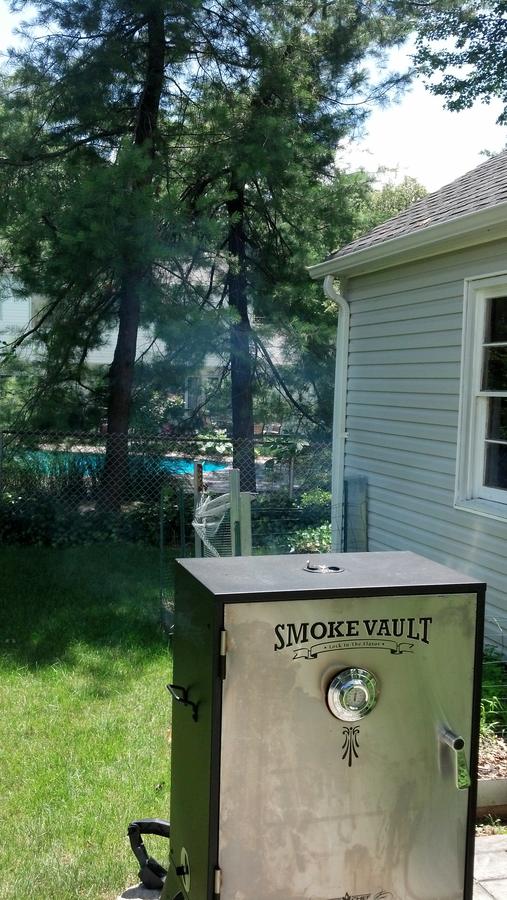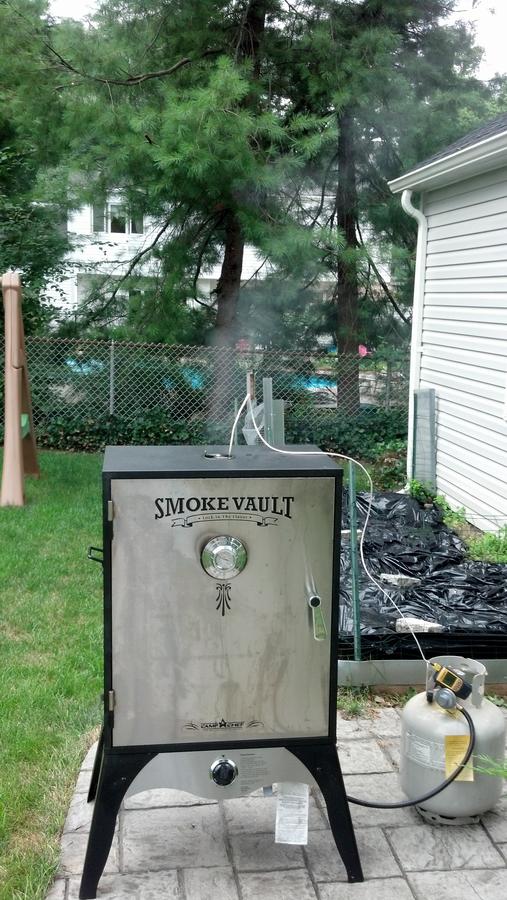I have a Camp Chef Smoke Vault 24' LP vertical water smoker. I had done a couple of longer smokes in which I kept filling my wood tray up with soaked wood and letting them smoke until they were ash. I think I only saw TBS just before the wood smoldered down to nothing while cooking at about 200-225. On this last smoke (3 hours to make a couple chickens), I decided to follow some forum advice and only put in a few handfuls of wood at a time. They needed to be replenished about every half hour while cooking around 225-275. There were periods of thicker (not really thick) white smoke and periods of thin blue smoke.
From what I've been reading it seems like it's ok (and maybe preferable) to just be able to smell the smoke and not even see the TBS. Any comments on that? If true then I may have only had to refill my wood tray once or twice. Also, some people have commented on not presoaking the wood. Any input there?
The part that really got me was at the end when I was trying to crisp the chicken skin. I turned up the heat to 300-325 and the charcoal at the bottom of the wood tray started to smolder and give me this for the last 15 minutes:
That was perfect. My thought is that the charcoals give a nicer tbs, but I'm not sure why it took such a high temperature to get it. I am only using the thermometer in the door, so I realize it could be off by a wide margin, but my chicken cooked perfectly and couldn't have been that far off. (Incidentally, it had a rich smoky flavor. So does it really matter? But I'm curious as to how much better it would be if it was seasoned with right amount of smoke). Temperature issues will be remedied soon when I get my Thermoworks thermocouple (on backorder). I will comment on that when it comes in!
-Joe
From what I've been reading it seems like it's ok (and maybe preferable) to just be able to smell the smoke and not even see the TBS. Any comments on that? If true then I may have only had to refill my wood tray once or twice. Also, some people have commented on not presoaking the wood. Any input there?
The part that really got me was at the end when I was trying to crisp the chicken skin. I turned up the heat to 300-325 and the charcoal at the bottom of the wood tray started to smolder and give me this for the last 15 minutes:
That was perfect. My thought is that the charcoals give a nicer tbs, but I'm not sure why it took such a high temperature to get it. I am only using the thermometer in the door, so I realize it could be off by a wide margin, but my chicken cooked perfectly and couldn't have been that far off. (Incidentally, it had a rich smoky flavor. So does it really matter? But I'm curious as to how much better it would be if it was seasoned with right amount of smoke). Temperature issues will be remedied soon when I get my Thermoworks thermocouple (on backorder). I will comment on that when it comes in!
-Joe
Last edited:







